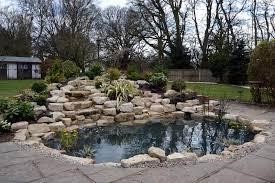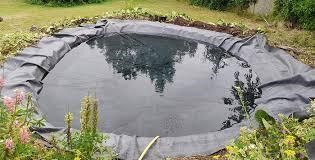Spring is on the horizon, and we are all thinking about getting back out into the garden – clearing up the ravages of winter and getting the garden looking great again is something that many people are thinking about at this time of the year, as we look forward to sunny summer days spent in a blooming garden.
If you are hoping for a garden that is a relaxing and peaceful haven, as well as being very beneficial for local wildlife, a really great thing to add to the garden this spring is a pond. This is one of the best ways to encourage wildlife in your garden and by doing so helps those many species that are struggling to survive. As well as this, there is little better than spending time sitting outside on a summer’s day with the tranquil water of the pond nearby.
To start with you need to find a suitable area for your pond. It doesn’t have to be huge, an area that has some sun as this is more likely to attract a range of species. The first thing to do is to mark out the area of the pond. If you are going to have water features and things like a rockery around the pond, also consider where you will put this.

Once you have marked out the area for your pond, it is time to start digging! The sides should be level, but you ideally should create a pond that has a shallower area around the edge and gets deeper in the centre. This will help creatures get in and out of the pond with ease.
When you have finished digging and are happy with the size and shape, as well as the depth of the pond, get all of the sharper pieces out of the bottom, like stones. Basically, anything that could potentially pierce the liner. Before putting the liner in, cover the bottom in a layer of sand approximately a few centimetres in thickness – then you can put your pond liner down.

Once you have your liner fully covering the pond, you can tidy up the liner that is on the edge of the pond by covering it with rocks or cutting it off with scissors. Rocks are good as they will keep it securely in place. You can then put another layer of sand on top of the liner.
Fill the pond with water after you have put the sand down – rainwater is best but you can use your hose if you don’t have a large supply of rainwater to use. The liner will stretch and change shape as it fills so keep an eye on it – try not to leave any liner exposed to the sun as this damages it.
When full leave the pond for a couple of weeks, then visit somewhere like this plants for trade Kent based supplier Palmstead to stock up on plants that will be suitable for your pond, to add colour and of course for the wildlife to hide in.